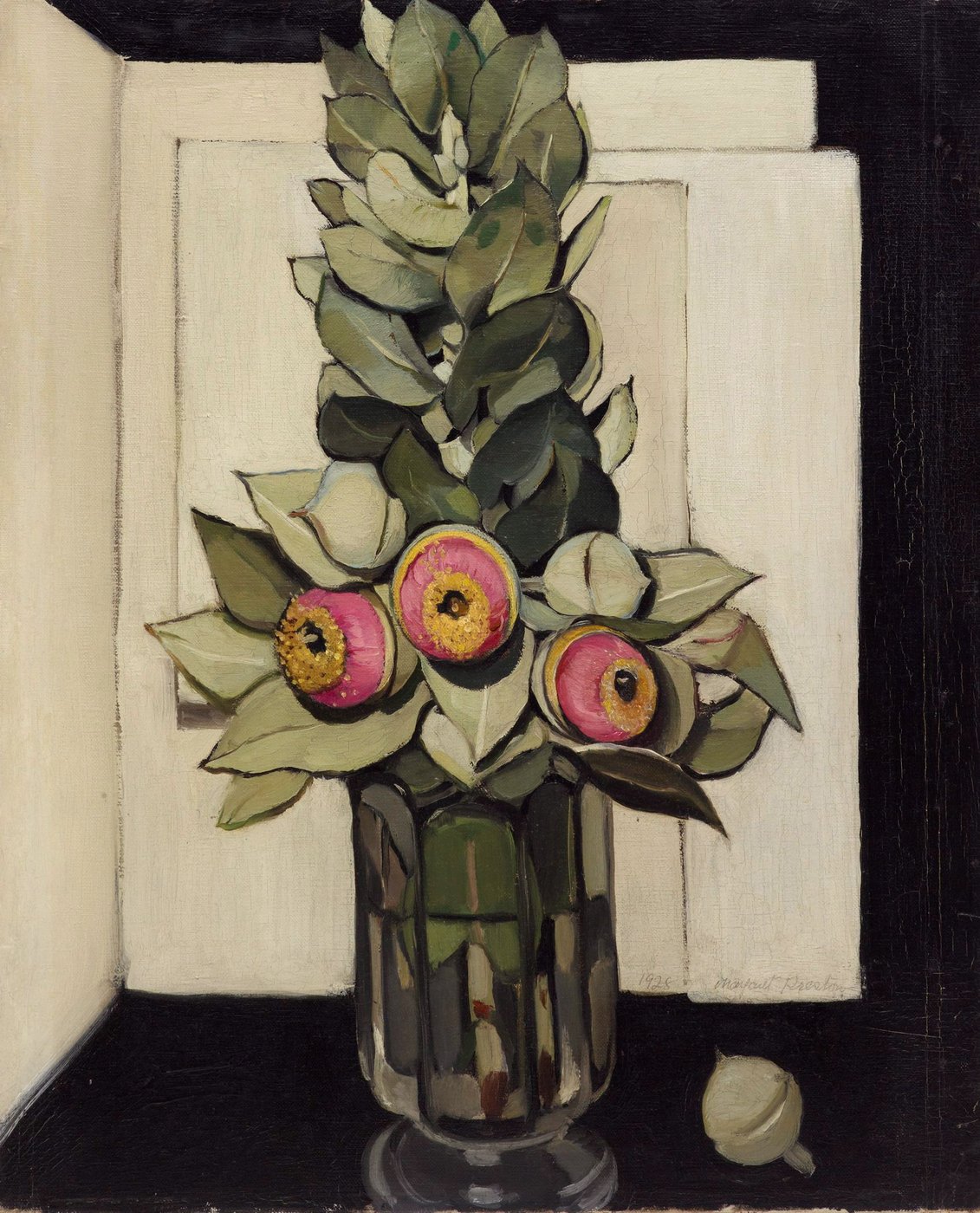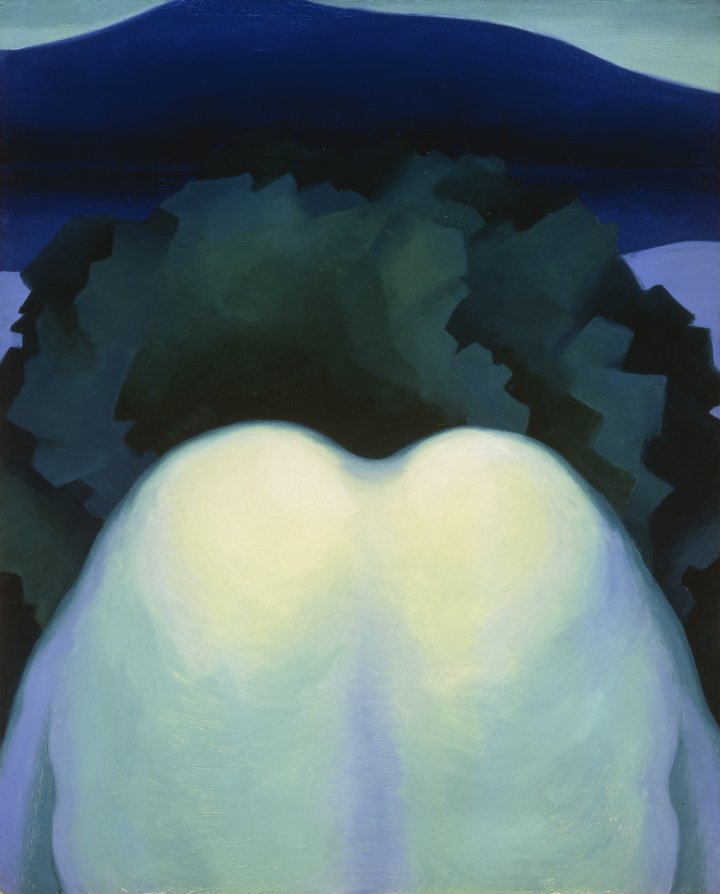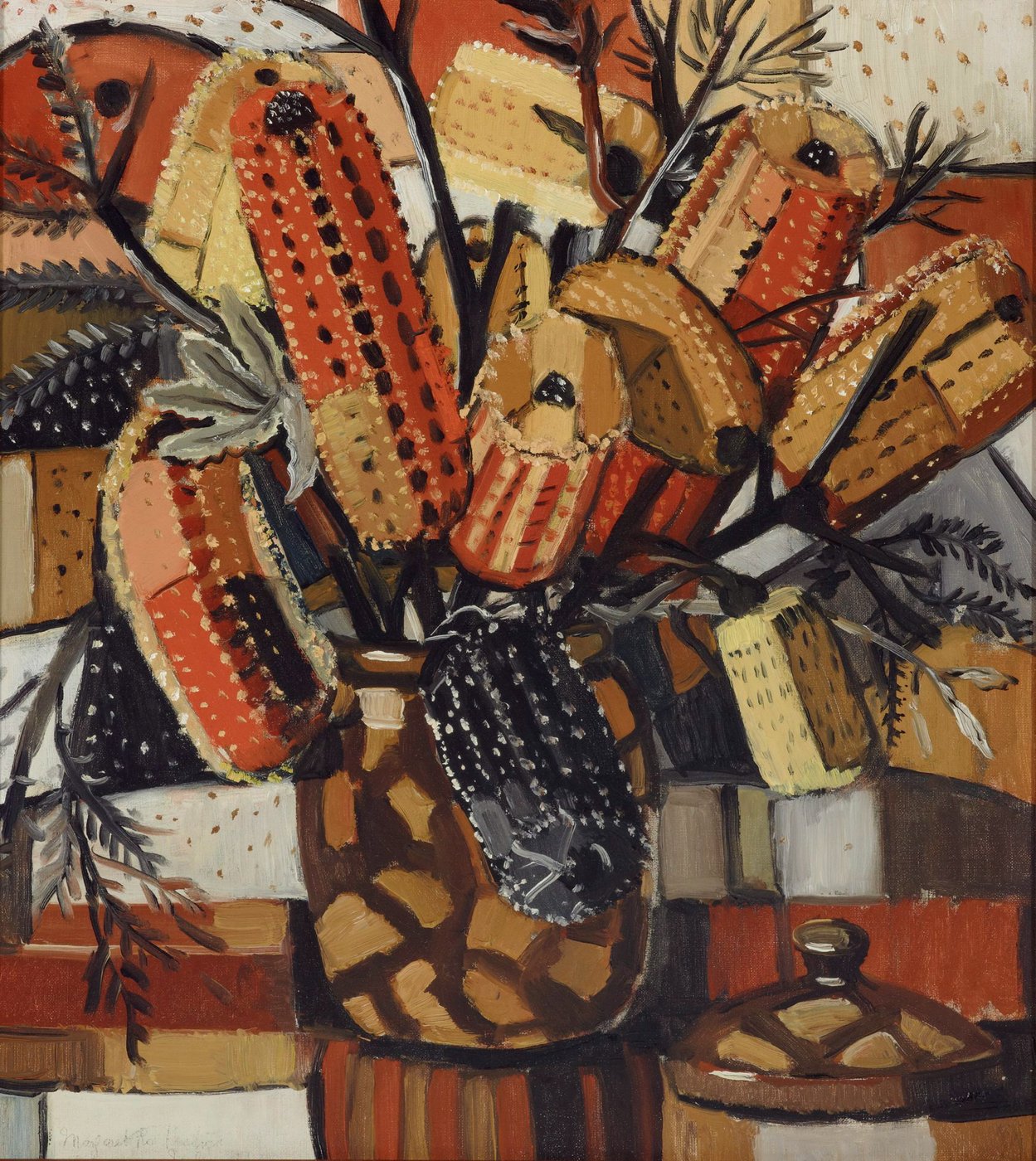Menu
O’Keeffe, Preston, Cossington Smith
making modernism 1 Jul – 2 Oct 2017
Abstraction: colour, form and spirit

Abstraction: colour, form and spirit
In the early years of the 20th century artists were experimenting with new theories of colour, abstraction and form. As progressive modern artists, Georgia O’Keeffe, Margaret Preston and Grace Cossington Smith, were all keenly interested in revolutionary new ideas like Henri Bergson’s life-force; new theories of abstraction from Wassily Kandinsky; theories of colour from Beatrice Irwin, and analyses of post-impressionism by critics Roger Fry and Clive Bell.
These theories were often underpinned by a new form of, often secular, spiritualism. In Australia as in the US, theosophy and other esoteric and occultist philosophies had been popular from the late 19th century, and very influential with artists. To many modernists, colour carried sensuous, psychological and spiritual meanings, and abstraction spoke a language of metaphysical energies and vitalist growth.
Prevalent too was the idea that abstract art shared, or aspired to, the qualities of music; that it made visual abstract sensations. A belief in synaesthesia – a mingling of the senses – was also widely held, where harmonies might give rise to colour choices, and rhythm induce forms.

Cossington Smith: colour and spirit
'All form – landscape, interiors, still life, flowers, animals, people – has
an inarticulate grace and beauty: painting to me is expressing this form in colour, colour vibrant with light – but containing this other, silent quality which is unconscious, and belongs to all things created.’
— Grace Cossington Smith, 1969
Cossington Smith was interested in the emotive and spiritual potential of colour. She came to be influenced profoundly by the American writer Beatrice Irwin’s 'The New Science of Colour’. Irwin refers to colour as ‘the spiritual speech of every living thing’, and advocated meditating on a scene to allow an intuitive, felt response to colour. She wrote of radiating colour: colour waves, auras and vibrations, and the capacity of colour to transform our states of mind. Her message – of colour as a regenerative force with the potential to visually translate spiritual consciousness – resonated with Cossington Smith, and helped strengthen her own creative creed of painting the world through ‘colour vibrant with light’.
‘In those days’, Cossington Smith said, ‘I felt everything was a pattern.’ She sought the truths that lay beneath the commonplace: ‘art’, she once said, ‘is the expression of things unseen – the golden thread running through time.’

Georgia O’Keeffe: abstraction and emotion
‘It is surprising to me to see how many people separate the objective from the abstract. Objective painting is not good painting unless it is good in the abstract sense. A hill or tree cannot make a good painting just because it is a hill or a tree. It is lines and colors put together so that they say something. For me that is the very basis of painting. The abstraction is often the most definite form for the intangible thing in myself that I can only clarify in paint.’ – Georgia O’Keeffe, 1976
O’Keeffe’s teacher Arthur Wesley Dow wanted artists to express emotion, not the outward appearance of things, in their art. The ultimate purpose of art, he said, was to ‘fill a space in a beautiful way’. O’Keeffe learnt the tenets of composition and the colour harmonies of Japanese and Chinese art, from Dow, but she also learnt much from close readings of Beatrice Irwin’s New Science of Colour and Kandinsky’s Concerning the Spiritual in Art. O’Keeffe believed Kandinsky’s theories of colour and form, and his conception of abstraction as an ‘unveiling’ of the true laws of nature, helped her to ‘say things with colour and shape that I couldn’t say in any other way – things I had no words for’. O’Keeffe and her friends in the avant-garde Steiglitz circle developed what’s been called ‘embodied formalism’, the expressing of a spiritual concept through material form.

Margaret Preston: significant form
‘Decorative work—it is the only thing worth aiming for in this our century—it is really the keynote of everything. I am trying all I know to reduce my still-life to decorations and find it fearfully difficult.’ – Margaret Preston, 1913
Like O’Keeffe, Preston also looked to Dow’s influential methods of abstraction influenced by Japanese art. The other major influence on Preston’s techniques of abstraction came from her time in Europe: the pervasive influence of post-impressionism. Roger Fry coined the term post-impressionism and it was also Fry who influenced Preston with his push to remove any false distinction between the decorative and fine arts. Preston was clearly in favour of the ‘decorative’ possibilities in art, and when she used that term in relation to her own art, she meant by it an emphasis on rhythm and design. Preston was also influenced by Fry’s colleague Clive Bell, who offered a theoretical basis for many modernist developments: a principle he called ‘significant form’. Bell believed significant form was art’s essential quality – something all objects that elicit aesthetic emotion share – the formal relationship between line, colour and shape.

